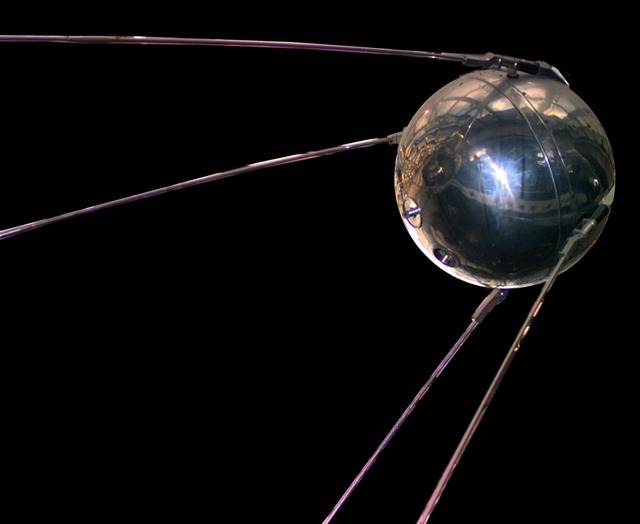
GPS is a technology that forms the basis of functions and navigation using smartphone location information. It is an essential skill in life now. How was this GPS born?
GPS is a satellite positioning system operated by the United States, but its origin was Sputnik 1, the first satellite launched by the former Soviet Union on October 4, 1957. The US, overtaken by the Soviet Union in space development, mobilizes scientists to analyze Sputnik. Among these were William Guier and George Weiffenbach, APL physicists at the Johns Hopkins Institute for Applied Physics, who played a major role in the birth of GPS.

Noting that the Sputnik 1 transmits signals at regular intervals, they found that the Doppler effect caused by the signal and its relative speed to the ground could be used to accurately identify Sputnik 1’s trajectory. Similarly, APL physicist Frank McClure suggests that using satellite signals that already know their orbits will allow them to know where they are on Earth. This reverse idea became the starting point for GPS.
The United States, which was under the Cold War with the Soviet Union at the time, was developing a missile submarine that was responsible for the nuclear deterrent. However, accurate location information was essential to determine where the submarines existed in the vast ocean. APL Space Commissioner Dick Kershner initiated the development of the satellite Transit. Inspector 1A, launched in September 1959, failed to reach orbit, but then Inspector 1B succeeded and began operating in earnest in 1964.
The position measurement error of the transit is about 25m, so if the user moves, the speed must be accurately determined, but even if the speed is shifted by only 1 note, the measurement result has shifted 0.2 nautical miles. Also, unlike GPS, which can grasp location information in three dimensions, Transit only specifies two-dimensional coordinates.
Unlike submarines that elevate 0m above sea level while using Transit, it is highly undulating. Therefore, to determine the location of an army on the ground or an aircraft flying in the sky, 3D location information with height added is required.
In 1962, the first time I felt the importance of 3D location information was Ivan Getting, CEO of The Aerospace Corporation, a non-profit organization aimed at developing aerospace technology. A former military man, he used his network to persuade the US Department of Defense, as a result of which the US Air Force launched a new satellite navigation technology development project, Program 621B.
This program later became the prototype of GPS. In recognition of this achievement, Getting was also awarded the Charles Stark Draper Award in 2003 with Bradford Parkinson, who played an important role in GPS development.
Central roles in Program 621B were Aerospace Corporation researchers James Woodford and Hideyoshi Nakamura. In a report submitted to the Ministry of Defense in top secret in 1966, they proposed a method called 3Δρ, triple delta row, which measures three-dimensional coordinates and time through four satellites. With this method, the theory of obtaining 3D location information was established, but there were technical challenges in its realization. To realize this technology, it was necessary to mount an atomic clock on the satellite, but at the time there was no atomic clock that could be used in space.

When the U.S. Air Force implemented Program 621B, the U.S. Naval Research Center NRL was also developing its own program. This is the Timation project, led by NRL researcher Roger Eastern. Easton entered the American Inventors Hall of Fame in 2010 for the achievement of playing a central role in the project.
In this project, four satellites were launched. Timation 1, first launched on May 27, 1967, is equipped with a stable quartz clock, but faces the problem of changing its frequency due to a solar storm. The failure of Timation 1 indicates that the signal emitted by the satellite is affected by the ionosphere, causing a delay. Therefore, Timation 2, launched on September 30, 1969, tried to solve the problem of signal delay in the ionosphere by mounting a crystal that emits two different frequency signals, but the effects of the solar storm could not be avoided.
NRL launched the Timation NTS-1 equipped with two lightweight rubidium oscillators in July 1974 and the Timation NTS-2 equipped with cesium atomic clock in June 1977 to accumulate the performance of the space atomic system operation. Although the Air Force-led program 621B was theoretical and the Navy-led Timing project produced technical results, it was a headache for the Pentagon that the two other projects required enormous budgets.
Parkinson, who took office at Program 621B, which was in a deadlock situation, visited the Ministry of Defense in September 1973. Program 621B is an atomic force mounted on a satellite by NRL’s Timation Project, which provides a three-dimensional location information function that users can use without an atomic clock. The clock is relatively stable, so it is reported that the program 621B should replace the ground signal in progress by relaying. Proposing a new project that combines the two projects.
This new project is a GPS development project. Parkinson’s proposal was officially approved on December 14, 1973, and the GPS Joint Program Office (JPO) was launched, which integrates the Navy and Air Force projects. JPO will focus on developing GPS with carefully selected brains from across the United States.
JPO completed the initial GPS by launching 10 satellites by 1985 starting with the launch of the first-generation GPS satellite, Navstar 1 on February 22, 1978. Including the retired satellites, all 74 satellites were launched by August 22, 2019. The GPS built with such satellites is still being operated through the Global Positioning System Aviation Corps with JPO as the predecessor. Related information can be found here .


















Add comment